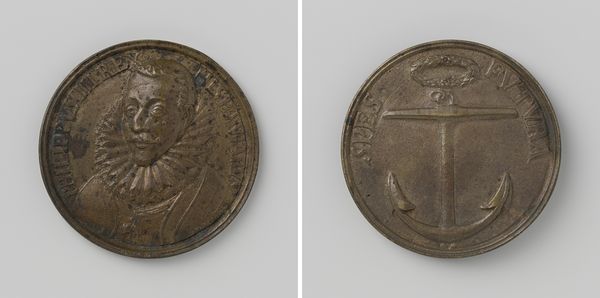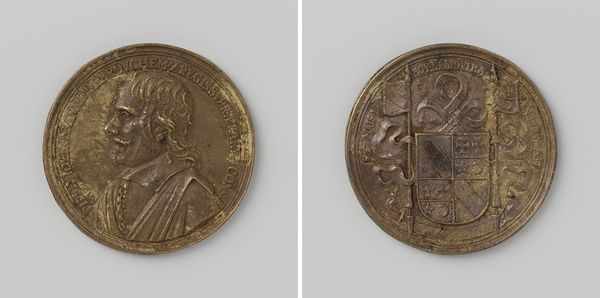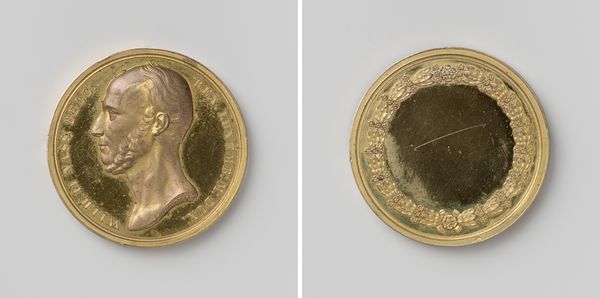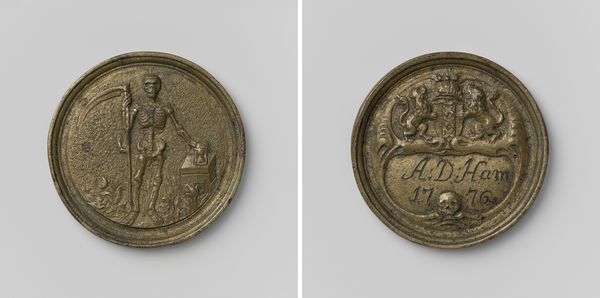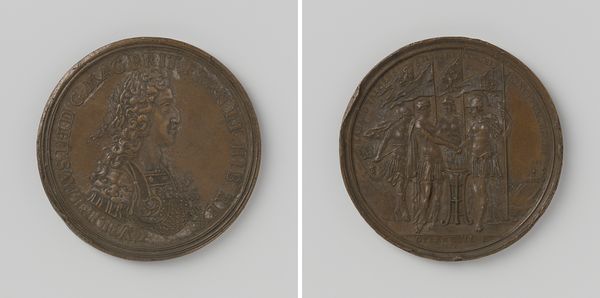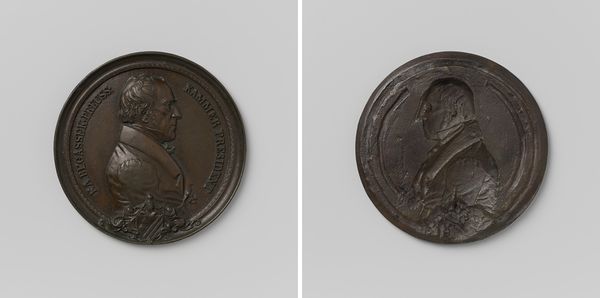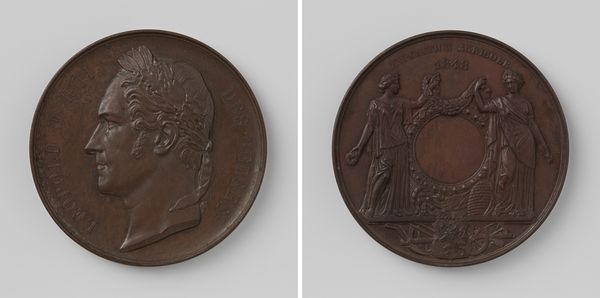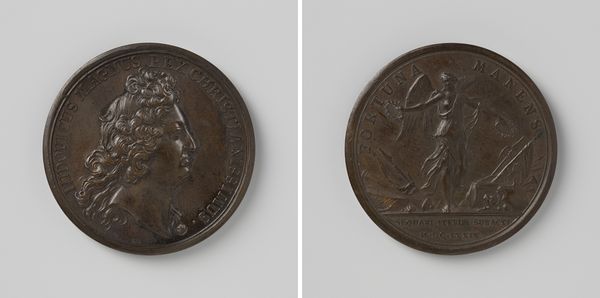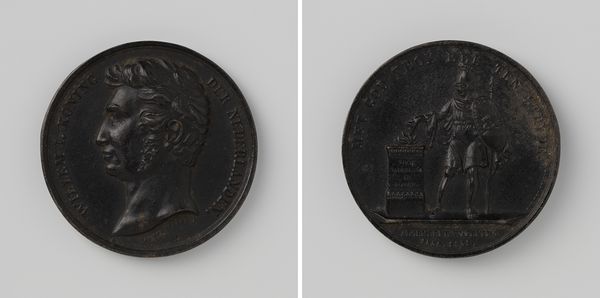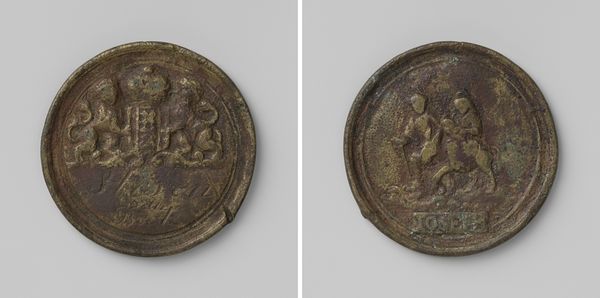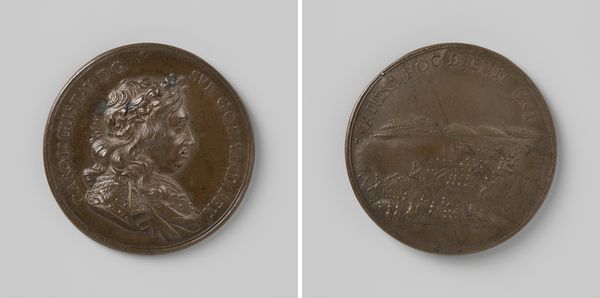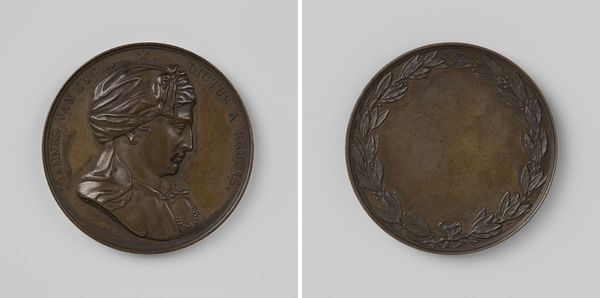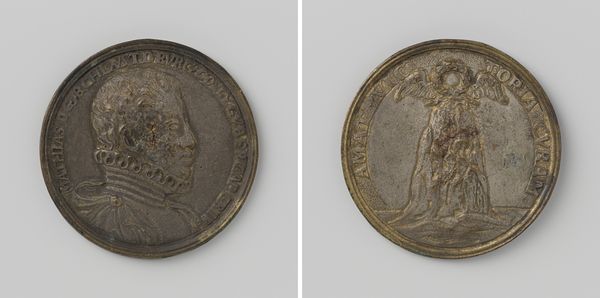
bronze, sculpture
#
portrait
#
neoclacissism
#
sculpture
#
bronze
#
sculpture
#
history-painting
Dimensions: diameter 6.8 cm, weight 7.64 gr
Copyright: Rijks Museum: Open Domain
Curator: Let's spend a moment with this bronze piece, "Gebhard Leberecht, vorst Blucher von Wahlstatt," a portrait made around 1815 by Karl Friedrich Schinkel. It’s currently housed at the Rijksmuseum. Editor: Instantly, I'm struck by its diminutive size and monumental feel simultaneously. The bronze almost feels like an unearthed treasure, timeworn and dignified. Curator: Yes, the scale is intimate, fitting perhaps for an object intended for personal commemoration rather than public display. Schinkel, though celebrated as an architect, clearly demonstrates adeptness in translating neoclassical principles to this more tactile medium. It prompts me to consider the availability and consumption of portraiture amongst different classes at the time. Who could afford bronze? Who was celebrated in this manner? Editor: Good questions. It’s interesting, isn't it? How a material inherently implies status. This isn't some ephemeral print; this bronze suggests permanence, an intent to preserve the sitter's legacy. Bronze casting itself—it is pretty cool when you think about it. What do you think informed this artistic choice? Curator: Undoubtedly the revival of classical ideals permeating the period. Bronze as a medium echoes ancient statuary, lending Blücher, a military figure of great importance in the Napoleonic Wars, a sense of timeless valor and enduring presence within history. Moreover, the controlled replication possible with bronze speaks to the developing industrial processes reshaping the art world at the time. Editor: The detail captured is still striking; it adds an emotional depth to the overall sense of a moment perfectly paused. Considering the war was barely over when this was made, this little circle manages to convey resilience and strength. The sitter seems stoic but contemplative. You almost expect it to feel cold given the bronze, yet there’s warmth—humanity in that face. Curator: I agree, it is the craft of the sculpting that breathes life into the medium. Thank you. This artwork presents us with interesting questions regarding history and manufacture. Editor: Thank you, yes. Definitely something to think about as we continue on.
Comments
No comments
Be the first to comment and join the conversation on the ultimate creative platform.
